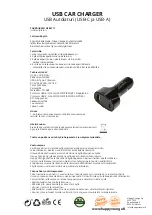
4-2
Your Driving, the Road
and Your Vehicle
Whenever we drive, we’re taking on an important
responsibility. This is true for any motor
vehicle
--
passenger car, van, truck or sport utility.
Driver behavior, the driving environment, and the
vehicle’s design all affect how well a vehicle performs.
But statistics show that the most important factor, by far,
is how we drive. Knowing how these three factors work
together can help you understand how your vehicle
handles and what you can do to avoid many types of
crashes, including a rollover crash.
Driver Behavior
The single most important thing is this: everyone in the
vehicle, including the driver, should buckle up (see “Safety
Belts” in the Index). In fact, most serious injuries and
fatalities to unbelted occupants can be reduced or
prevented by the use of safety belts. In a rollover crash, an
unbelted person is significantly more likely to die than a
person wearing a seat belt. In addition, avoiding excessive
speed, sudden or abrupt turns and drunken or aggressive
driving can help make trips safer and avoid the possibility
of a crash, especially a rollover crash. This section
provides many useful tips to help you drive more safely.
Driving Environment
You can also help avoid a rollover or other type of crash
by being prepared for driving in inclement weather, at
night, or during other times where visibility or traction
may be limited (such as on curves, slippery roads or
hilly terrain). Unfamiliar surroundings can also have
hidden hazards. To help you learn more about driving in
different conditions, this section contains information
about city, freeway, and off
-
road driving, as well as
other hints for driving in various weather conditions.
















































